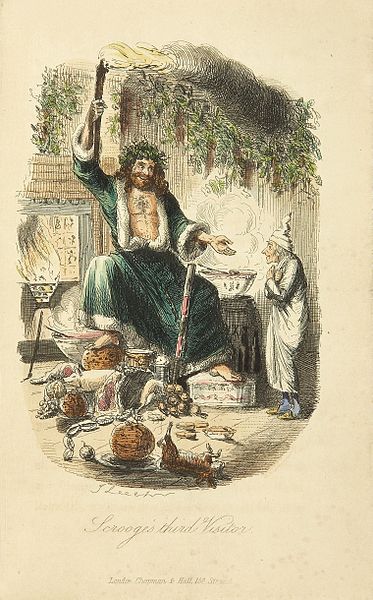December 25, 2018 - Christmas
Christmas is a Christian religious holiday, and an American federal holiday observed on December 25 of each year. However, many people of other faiths celebrate Christmas in a non-religious context. Christians celebrate this day as the birth of Jesus Christ, the son of God, on December 25. Eastern Orthodox Christians celebrate Christmas on January 7.
In the 4th century, church officials decided to start celebrating the birth of Jesus. However, the bible did not state the date of Jesus’s birth. Around this time, the Roman Emperor Constantine converted to Christianity. Before this, Romans celebrated Saturnalia, a winter festival, celebrated in late December. Saturnalia involved a week-long feast and celebration. One part of the celebration was giving each other gifts. Read more about Saturnalia here. When the Emperor converted, many Saturnalia customs were absorbed into the Roman Christmas celebrations. A few years later, Pope Julius I chose December 25 as the official date for the celebration of Jesus’s birth.
The drinking, feasting, and giving of presents led many to believe that Christmas was not really a religious holiday. Puritans in New England and in England banned its observance because they believed it was not a religious holiday. From 1659 to 1681, the celebration of Christmas was outlawed in Boston, and you could be fined for celebrating it.
It wasn’t until the 1800s that Americans began to embrace Christmas. Americans changed the holiday from a community party holiday into a family-centered day of peace. One of the reasons why Christmas became popular at this time is that there was a lot of tension between classes. During this conflict, Washington Irving wrote The Sketch Book of Geoffrey Crayon, gent., a series of stories about the celebration of Christmas. The stories featured a wealthy man who invited peasants into his home for the holiday. This created the idea that Christmas should be a warm holiday that brings all classes together. Also around this time, A Christmas Carol was published, which also had a message about being charitable at Christmas. These books inspired the American people, and demonstrated the benefits of celebrating the holiday.
To request more information about our rare books editions of the aforementioned books, please email rare_books@bpl.org. Learn more about our rare books department here. You can check out other editions of these books here:
In 1870, Christmas was declared a federal holiday. Over the next 100 years, the American Christmas tradition evolved to include parts of other customs. This included decorating trees, sending holiday cards, and giving gifts.
Some of these customs come from the pagan celebration of Yule (read more about Yule here). Old Yule customs often had people place branches of evergreen trees in their homes. That tradition turned into placing whole trees into homes.
Many Americans celebrate Christmas by putting up a Christmas tree in their home. They will decorate the tree with ornaments and lights. Families who celebrate typically place wrapped presents under the tree, to be opened on the morning of December 25. Those who are Christian may attend church the night before, and some may attend that day. The service will typically include a retelling of Jesus's birth. Some workplaces, friends, and families also celebrate the holiday with games involving presents. Two of these games are Secret Santa and Yankee Swap/White Elephant.
Learn more about the origins of this holiday:
If there's a particular celebration you or someone you know participates in that we missed, let us know by leaving a comment on this post. Or, if you think we got something wrong, please also comment and let us know. We try to be as accurate as possible, but if there's a mistake, we want to correct it.



Add a comment to: The Origins and Practices of Holidays: Christmas